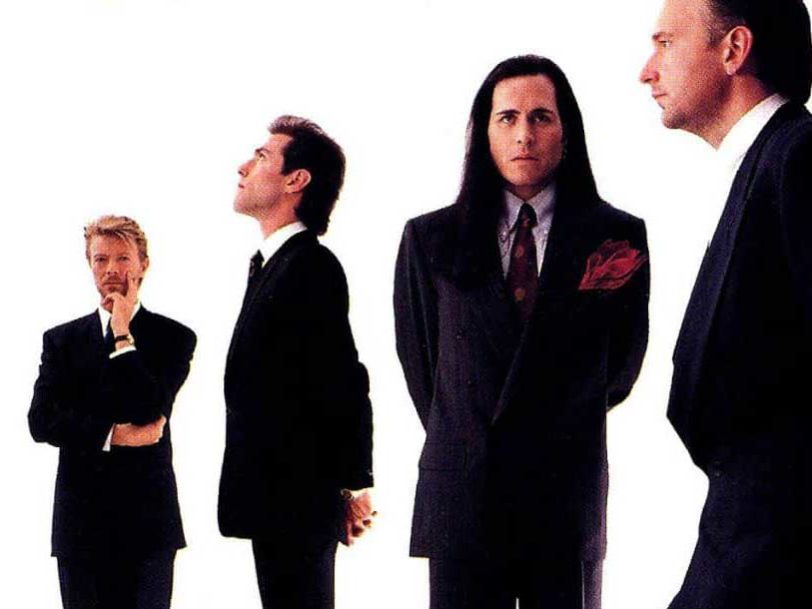Hindsight is a great leveller, but even 30-plus years’ worth of it fails to explain why David Bowie was criticised for the two albums he made with the short-lived Tin Machine. The artist himself pitched the bruising rock quartet as a way of getting back to basics after the heavily produced mid-80s albums Tonight and Never Let Me Down, but neither fans nor critics were convinced. Incredibly, even Bowie’s label, EMI, hated Tin Machine’s debut album so much they tried to shop his contract to other labels after its initial release in May 1989.
Listen to Tin Machine’s debut album here.
“The Top 40 scene was an unusual experience”
In retrospect, though, it’s possible to put Tin Machine in context if we accept the project as the first step in Bowie’s latter-day artistic renaissance, which gathered pace with 90s albums such as 1. Outside and ‘hours…’, and eventually flourished so fruitfully on his 21st-century classics The Next Day and Blackstar. After all, if we rewind to the pre-Tin Machine days of 1987, we discover that Never Let Me Down and the mega-grossing Glass Spider tour showered Bowie in fame and fortune, but also found him looking to reconnect with “what used to excite me about being in a band”.
“Being shoved into the Top 40 scene was an unusual experience,” he told the Orlando Sentinel in a contemporaneous interview. “It was great I’d become accessible to a huge audience… but not terribly fulfilling.”
Accordingly, Bowie – a figure so widely fêted for his ability to embrace change – duly reinvented himself once again. In doing so, however, he did the last thing most of his long-term admirers might have expected: form an aggressive four-piece rock group with an atypically democratic approach. They called themselves Tin Machine and, as Bowie biographer Christopher Sanford later wrote, they were put together as “a way for Bowie to purge his past, while making his usual deft assault on the market”.
“We wanted to come out of the box with energy”
Certainly, the initial part of that statement rang true. In Tin Machine, Bowie was joined by rhythmic brothers-in-arms Tony and Hunt Sales (previously best known for providing the thunderous bass and drums on Iggy Pop’s Bowie-produced Lust For Life album) and expressive lead guitarist Reeves Gabrels – these days a key member of The Cure. From the word go, Bowie stressed that every band member was equal, and the no-holds-barred, proto-alternative-rock sound they crafted through jamming the old-fashioned way certainly proved cathartic for all concerned.
Working quickly in a series of sessions which took the band and producer Tim Palmer from LA to Switzerland and Nassau in The Bahamas, Tin Machine’s debut album was nailed in little more than six weeks – a feverish bout of creativity that resulted in 35 tracks which were eventually whittled down to 14. Most of the songs were captured live with minimal overdubs, and Bowie even refused to rewrite most of his initial lyrics out of respect for his new band’s spontaneous approach.




